Do you know that understanding and capturing customer psychology is the key to success in effective business? That’s why the “Buyer Persona” is so highly regarded and has become an essential tool in today’s marketing strategy. Here, we will explore the concept of “Buyer Persona”, as well as how to build the ideal customer persona.
What is Buyer Persona?
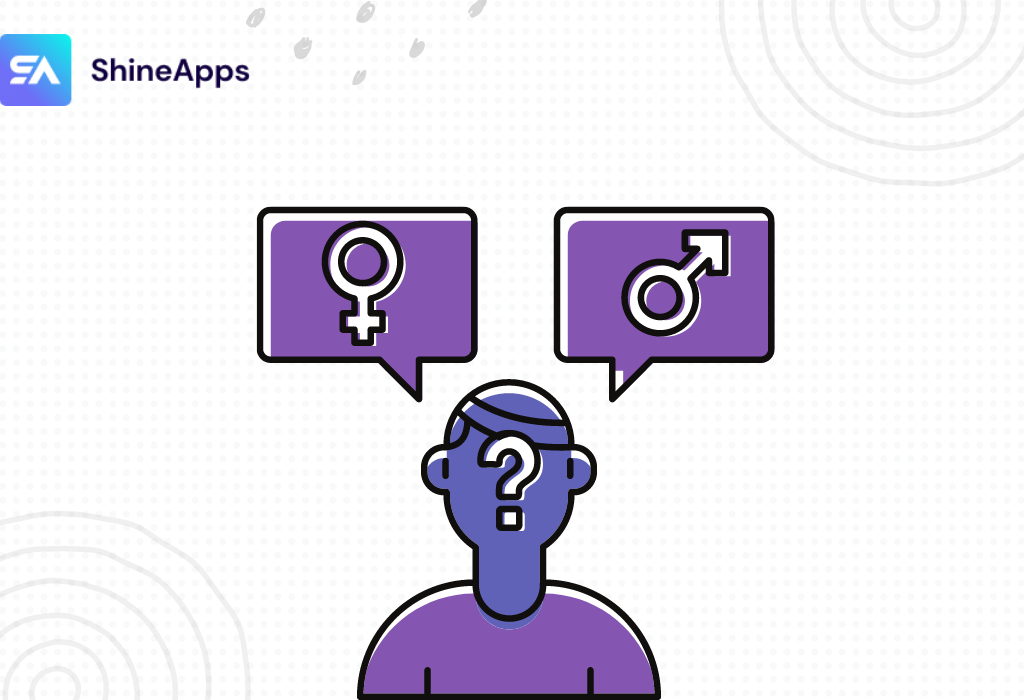
Buyer Persona is a hypothetical model representing the ideal customer portrait of the business. Persona helps businesses shape strategies for many business activities, from product development, marketing, and sales to customer care.
To carry out all of the above activities, businesses are forced to thoroughly understand the behavior, needs, preferences, and personalities of their target customers. Therefore, a realistic customer portrait will help the company easily visualize, go in the right direction, and propose a reasonable strategy.
Why is a Buyer Persona important?
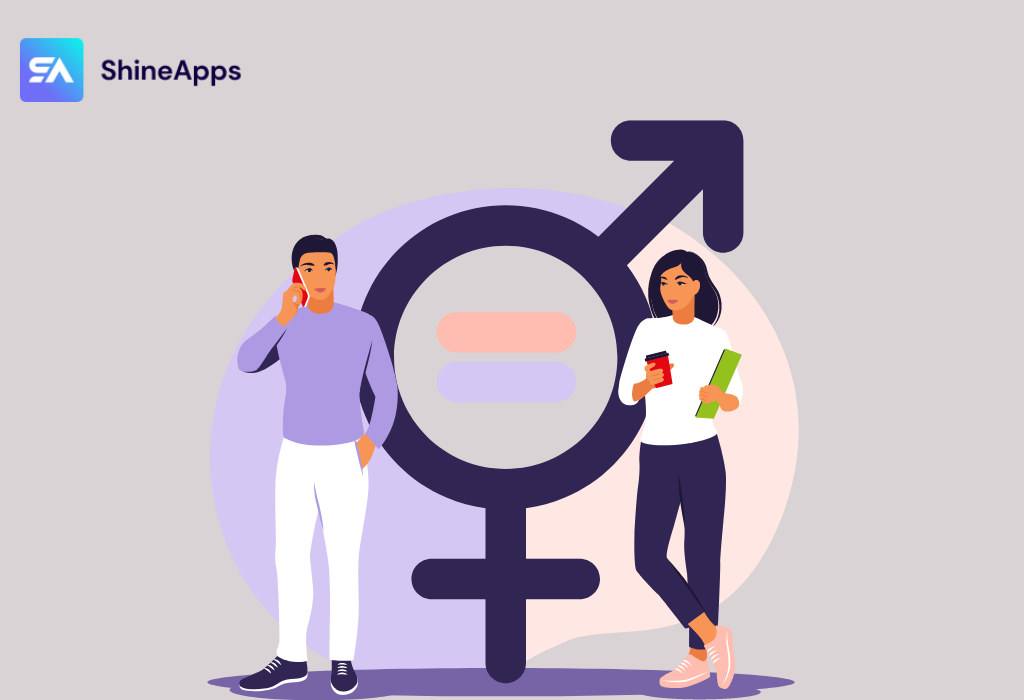
Buyer Persona is an important element of marketing and business strategy because it brings many important benefits and values to the business. The effects of Buyer Personas can include:
A better understanding of customers
Buyer Persona helps businesses have a clearer and more detailed view of each group of potential customers. As a result, businesses can better understand the demographic characteristics, preferences, needs, and buying behavior of each group. This helps to create a comprehensive picture of the customer and helps the business meet their needs accurately and efficiently.
Optimizing marketing strategy
By understanding each customer group well, businesses can customize and optimize their marketing strategies to suit the goals and requirements of each Buyer Persona. This increases your chances of success in attracting customers and generating profits.
Product and service orientation
Through understanding the needs of each Buyer Persona, businesses can develop and improve products and services to suit the market. This helps businesses create solutions that meet the actual requirements of customers and improve competition in the market.
Focus on the right audience
Buyer Persona helps identify the right target customer group for your product or service. Instead of reaching the entire market without efficiency, businesses can focus their efforts, resources, and time on specific and potential target groups.
Build trust and create long-term relationships
By meeting the needs and requirements of each customer group in the best way possible, businesses can build trust and create long-term relationships with customers. Customers feel cared for and valued, thereby increasing the likelihood of repurchases and positive reviews about the business.
How Many Buyer Personas Do You Need?

The number of customer personas needed in a Buyer Persona depends on the size and complexity of your business, your industry, and your marketing goals.
Some businesses typically create 2–5 customer personas to represent key target groups. This allows them to focus on the most important customer groups and develop the best marketing strategy for each.
However, in some special cases, a business may need to create more customer personas. For example, in a diversified retail or service sector, there may be many different market segments and target audiences, each with its own unique characteristics and requirements. In this case, businesses may need to create multiple Buyer Persona to ensure effectiveness in reaching and serving each target group in the best way possible.
It is important to create customer profiles that are based on accurate and reliable information. Researching and gathering information from reliable sources is important to building accurate and useful Buyer Personas for your business.
What are negative personas?
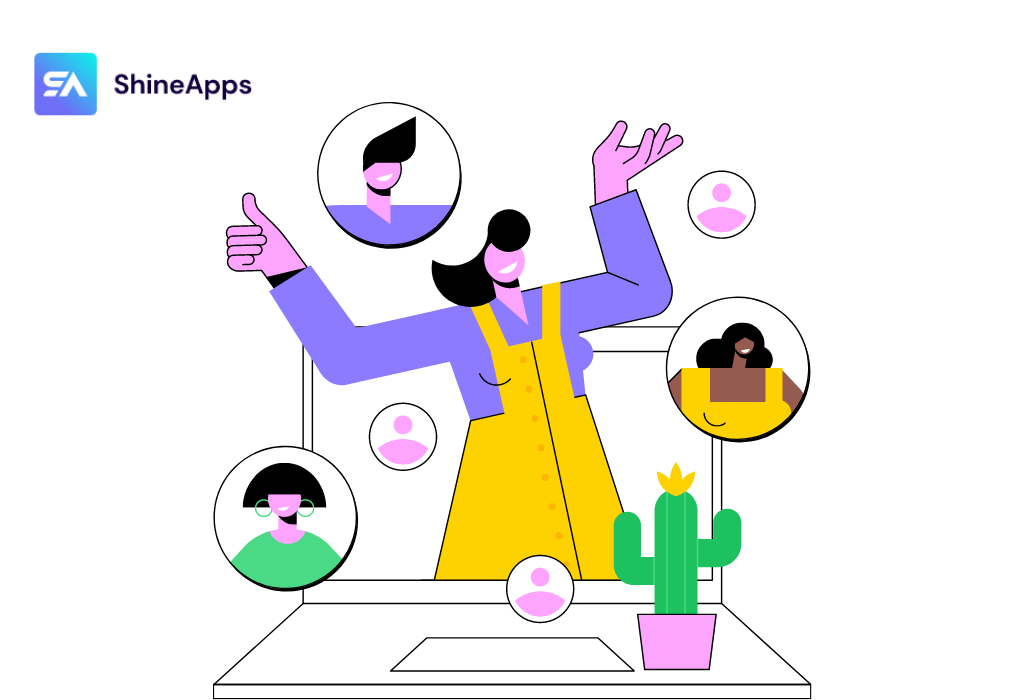
“Negative Personas,” is a term used to describe a group of customers who are not a good fit or are not suitable for a company’s products or services. These are customers who tend to be unhappy, do not meet expectations, or have no need to use your product or service.
For example:
A North American technology company is providing social media advertising to large businesses with more than 200 employees. In their advertising campaign, they target successful and long-established companies.
As such, their Negative Personas could be Startups, small companies with fewer than 10 employees, or companies located outside of North America.
Understanding Negative Personas helps businesses create more effective customer service and marketing strategies. It’s important to focus on potential customers and create positive experiences to attract and retain real customers.
5 Main Factors That Determine The Customer Persona
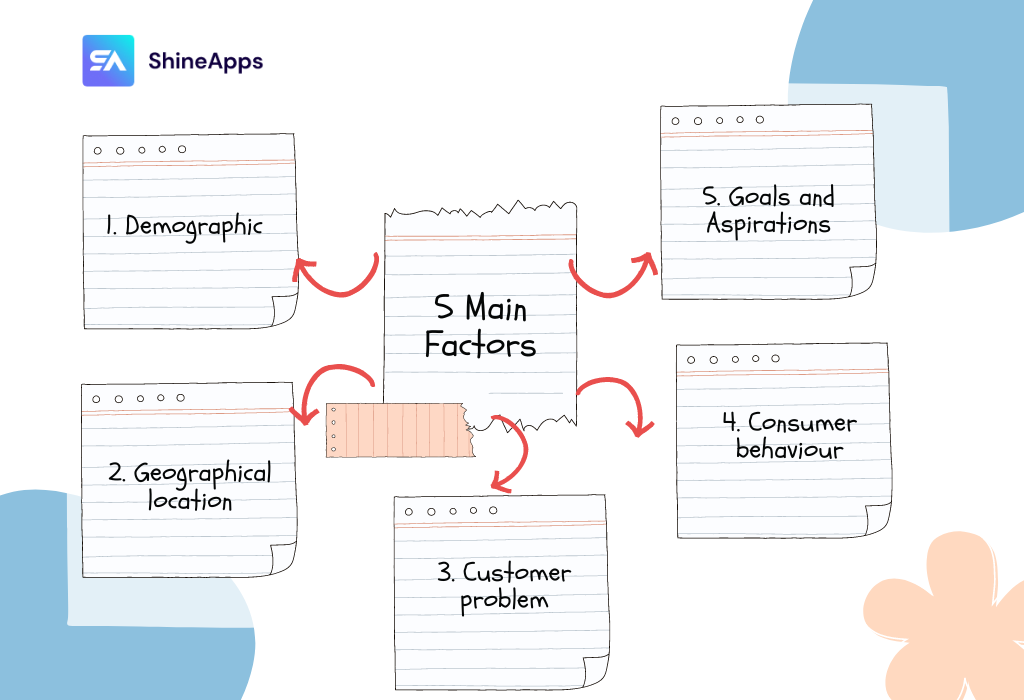
By analyzing and combining these factors, businesses can develop detailed customer personas that guide their marketing strategies and product development to better serve their target audience. Here are five main factors that determine the customer persona:
Demographic
Demographics include gender, age, income, occupation, cultural background, and family status.
Demographics are considered an essential tool for measuring the market, helping businesses understand their target audience, shortening the reach distance, and refining quality target customers. As a result, businesses can easily predict their trends, behaviors, and buying journeys and thereby make the most effective plan.
Geographical location
Customers are everywhere, but businesses need to identify specifically where their target customers currently live, in which region, and on which continent. As a result, you can easily deploy appropriate marketing plans and strategies in order to make the most of your business’s time and resources.
Customer problem
Based on the benefits and functionalities of the product/service, businesses can easily identify the issues or needs their customer groups are seeking to address or satisfy. From there, they can create appropriate and effective marketing content to cater to those specific needs and concerns.
Consumer behaviour
Understanding consumer habits, such as shopping time, shopping methods, preferred shopping locations, and payment preferences, helps businesses make accurate marketing decisions in choosing communication channels and flexibly improve strategies to meet constantly changing customer insights.
Goals and Aspirations
Understanding the goals, aspirations, and long-term objectives of customers provides valuable information for creating targeted marketing messages and offers that resonate with their desires.
How to Create a Buyer Persona
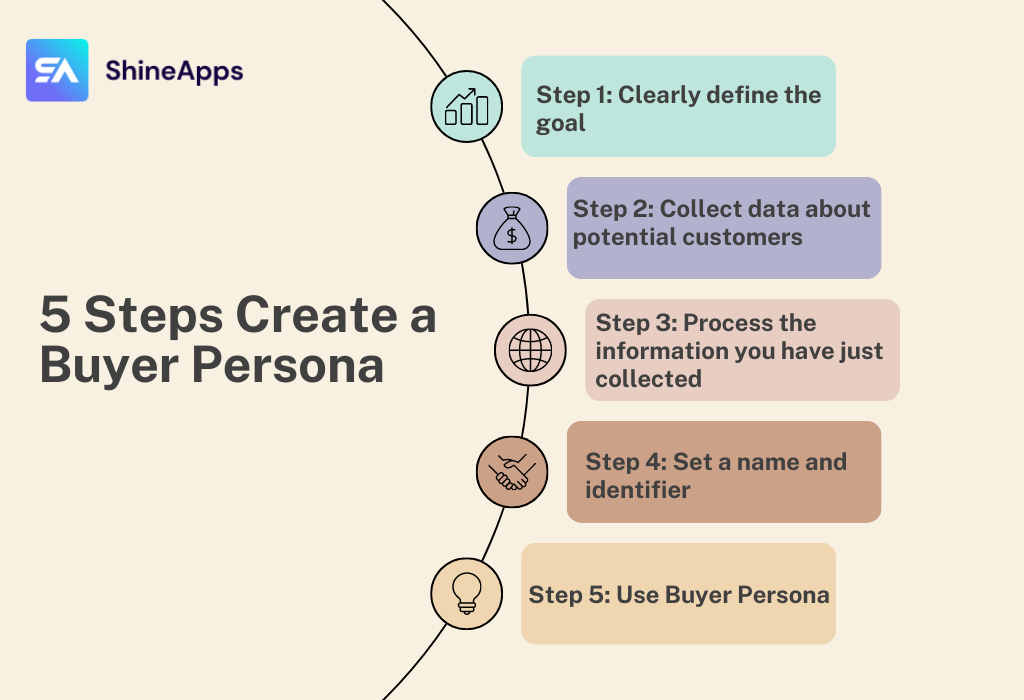
Persona is created through research, surveys, and interviews. It all comes down to a mix of customers, leads, and people outside of your database. Here’s how to go through the steps involved in creating a complete Persona:
Step 1: Clearly define the goal
Targeting helps us know what purpose this customer profile serves in the sales process and the basic needs and wants of the potential customer base. From there, the appropriate data collection is available.
Step 2: Collect data about potential customers
One of the most important steps in building a Persona is getting information from the customer. That means you will have to do several interviews to know what motivates your target customers. But how do I find this information? Here are some suggested resources you should exploit:
- Use the existing customer database: An existing customer base is the perfect place to start interviews. Because they purchased your product and interacted with your company. At least some of them are likely to exhibit the target personality(s) you need.
- Use your leads: Try interviewing people who haven’t bought your product and don’t know much about your brand. Potential customers will be a great choice because you already have their contact information. Use the data you have about them to figure out who might be a good fit for building your Persona.
- Use relationships: You’ll probably also need to rely on some referrals to interact with people who might be a good fit for the Persona. Especially if you are targeting new markets and don’t have any customers yet. Use your relationships, such as with co-workers, existing customers, and social media. They can help you find many interesting sources of information.
Step 3: Process the information you have just collected
And now this data is ours. Let’s start by categorizing the demographic and psychological information, behavior, and preferences of our customers and grouping them. Remember that a product usually has 2-4 different ideal customer portraits. The criteria that help us easily classify the information of each of these Buyer personas are:
- Gender
- Age
- Income
- Unresolved issues they face
- Preferred channels of communication and interaction
- Influencing factors in their purchasing decisions
Step 4: Set a name and identifier
Imagine your ideal customer is someone with a defined identity and an unmet need. Give the person a name, and that name usually tells us whether the prospect is male or female—a short one or two-letter name. You can choose a face like the one you imagined for that customer so that later on it’s easy to “communicate”.
Naming and identifying the customer persona also makes it easy to identify and name when applied in marketing and product development strategies.
Step 5: Use Buyer Persona
Apply the created customer profile to your marketing activities, develop products and services, and create relevant media content to engage your target audience. Using customer personas helps businesses better understand their target audience and enhances the effectiveness of marketing activities.
Conclusion
ShineApps has just shared all the information about Buyer Persona. It’s a powerful tool to help businesses better understand their customers and adjust their marketing strategies accordingly. Applying this information to your marketing strategy will help increase business efficiency and build lasting relationships with customers. Start creating your own Buyer persona and see the difference it makes to your business!



